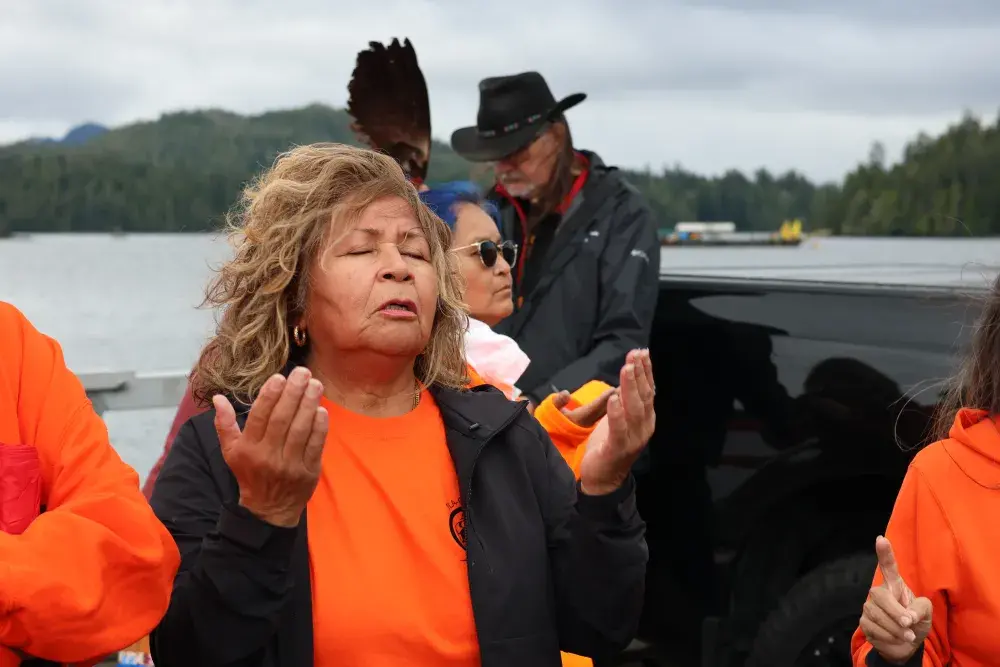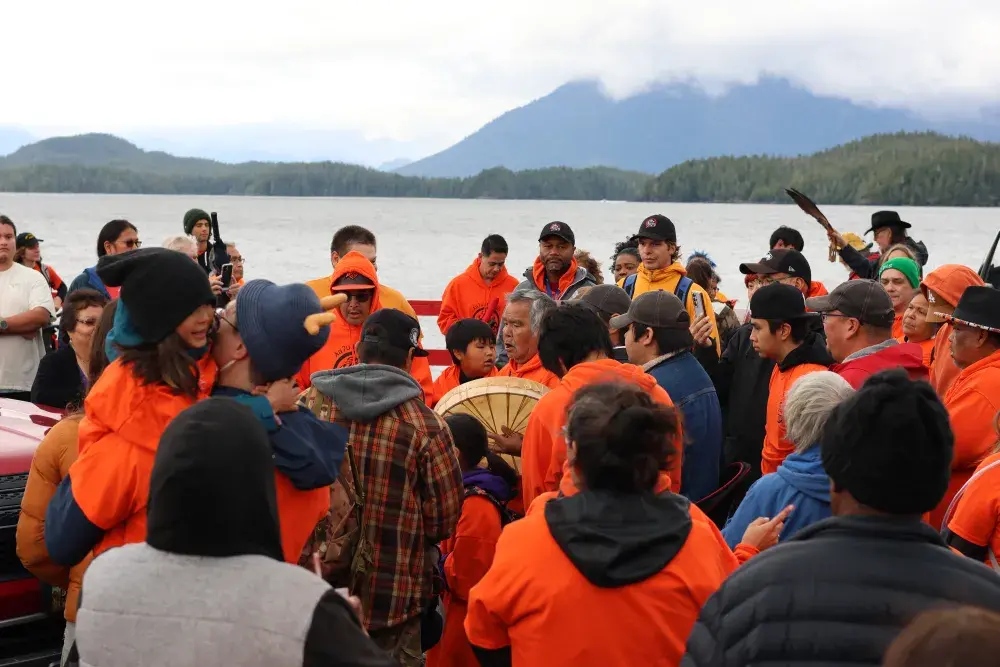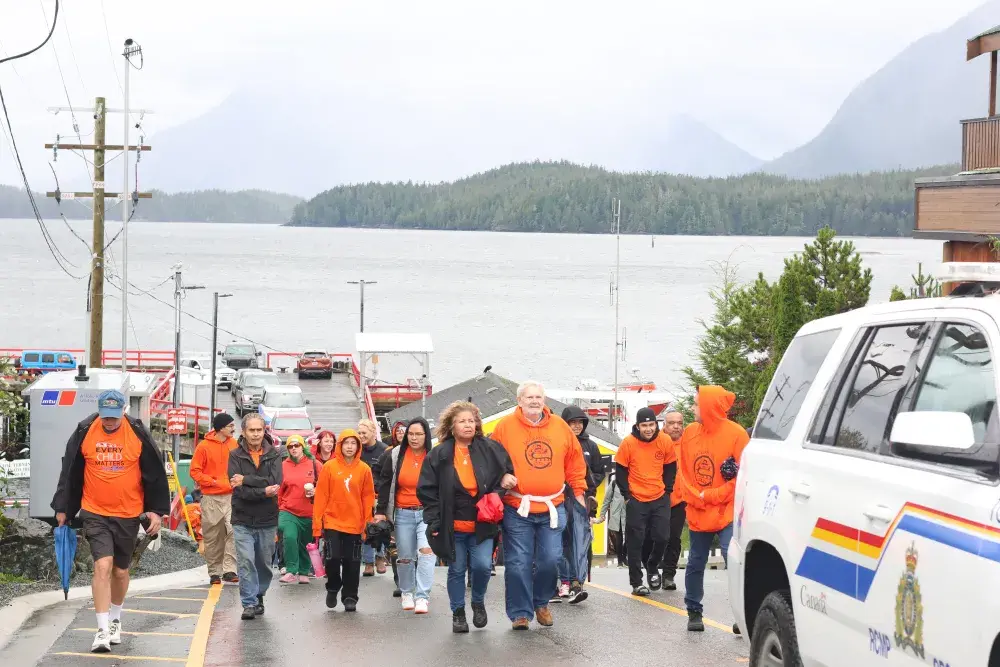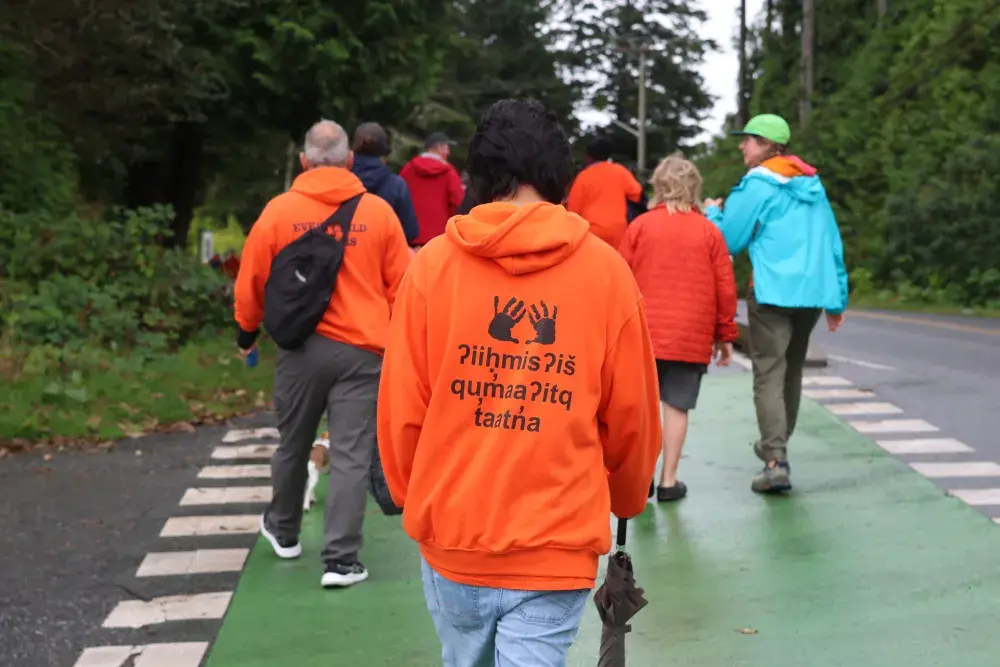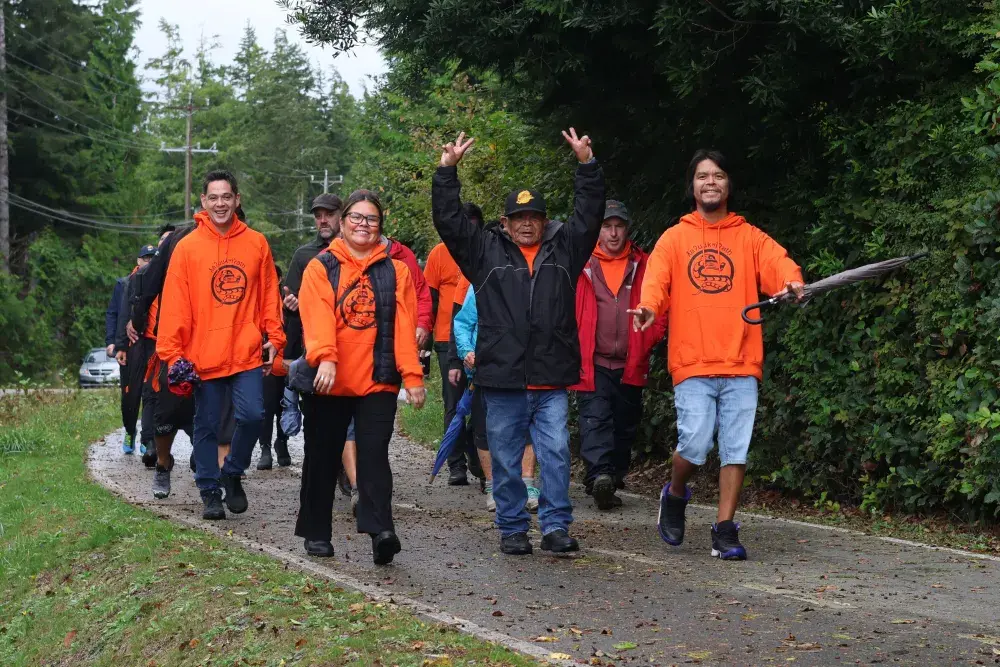At the top of the hill overlooking Tofino’s First Street Dock, Nuu-chah-nulth elder Tom Curley, 86, paused for a moment to catch his breath.
He couldn’t find his orange shirt for the annual Truth and Reconciliation Day Walk, but Tla-o-qui-aht gave him a new one, which he tucked in his jacket like a scarf.
Curley spent 15 years as a ‘student’ of Christie Indian Residential School. He says it wasn’t the type of place you went to get into university.
“A lot of my friends committed suicide because of that,” said Curley. “There were a lot of my friends who I knew got abused every day; all of us did one way or another. It was constant. We didn’t have much freedom as a child growing up.”
It has been 10 years since the Truth and Reconciliation Commission of Canada (TRC) released its Final Reports, along with 94 Calls to Action to guide Canada’s path toward reconciliation.
Under a decade of Justin Trudeau’s Liberal government from 2015 to 2025, some important steps were taken; in 2019 the Indigenous Languages Act was introduced to help revitalize Aboriginal languages; Canada passed legislation in 2021 to implement the United Nations Declaration on the Rights of Indigenous Peoples (UNDRIP); Pope Francis travelled to Canada in 2022 and issued an apology for the Catholic Church’s role in residential schools; and work is underway to reduce the number of Indigenous children and youth in care with the Act respecting First Nations, Inuit and Métis children, youth and families (the Act) coming into force in 2020.
Progress on the national crisis of missing and murdered Indigenous women, girls and 2SLGBTQI+ people included a federal commitment to 37 new shelters and 36 new transitional homes for Indigenous women and children seeking safety.
But Curley says more needs to be done, especially for the children.
“Apprehension, foster care, adoptions we don’t need. That’s what’s damaging us a lot,” he said.
Tla-o-qui-aht First Nations Chief Councillor Elmer Frank says they continue to be “stonewalled” when they try to make any movements with the Government of Canada.
“The federal government decided that they would create a day called Reconciliation Day. And as the chief councillor for Tla-o-qui-aht First Nations, I’m finding that we are the only ones that are trying to reconcile with the federal government. There is little to no movement from them,” said Frank on Sept. 30 in the House of Wickaninnish at Tin Wis Resort.
“It’s a different story with the provincial government. The provincial government will come to the table, they will negotiate and work with us. Same with the municipal government,” Frank continued.
Tla-o-qui-aht Natural Resources Manager Saya Masso also expressed frustration, pointing out that the Tla-o-qui-aht Tribal Park Allies program is doing all the “heavy lifting” to close the gap and make up for the “dark time” when potlatches were banned and First Nations were forbidden to speak their language.
Since 2018, the Tribal Parks Allies program has connected with 130 Tofino businesses and raised over $1.1 million from collecting a one per cent stewardship fee from customers. Masso noted that the program establishes land rights without having to go to court.
“We’ve been here 10,000 years. Canada needs to make its changes so that we are built into the fabric of Canada’s governance,” he said to the standing-room only crowd of orange shirts.
‘Justice-related Calls to Action are some of the most urgent’
Hemas Kla-Lee-Lee-Kla (Kory Wilson), chair of the BC First Nations Justice Council (BCFNJC), said the justice-related Calls to Action (number 25 to 42) are some of the most urgent, because they speak directly to the overincarceration of Indigenous adults and youth.
She emphasized that reconciliation is not just symbolic, but must be tied to systemic change.
“The creation of the BC First Nations Justice Strategy, co-developed with First Nations and supported by governments, is one example of turning words into action,” Wilson wrote. “However, there is still a long way to go, particularly in addressing the overrepresentation of Indigenous peoples in custody, and ensuring our communities have the resources to restore their own laws and justice systems,”
Gord Johns, NDP MP for Courtenay-Alberni, re-iterated the urgency to deliver on all 94 Calls to Action.
“The pace of action has been too slow,” said Johns. “Reconciliation must also live beyond governments—it must be carried in our schools, our workplaces, and our daily relationships. For me, reconciliation is about transforming our institutions and building a country where justice, equality, and respect are the foundation for every generation to come.”
“The next decade must not be another lost decade. It must be one of true change,” said MP Johns.
On Sept. 30 Prime Minister Mark Carney gave a speech on Parliament Hill and the traditional unceded territory of the Algonquin Anishnaabeg People to mark the fifth annual National Day for Truth and Reconciliation. Carney began by describing an Indigenous painting he had installed outside the cabinet room at the beginning of his mandate as Prime Minister.
“The first few of those panels burst with vibrant colours and then with contact those colours fade until the middle ones become smothered in white paint. A culture literally whitewashed. The final panels begin to resemble the original glory with images, though marked by what has been endured, that are renewed and resurgent. This painting captures the pain of suppression and assimilation and the possibility of reconciliation and renewal,” Carney shared.
“That possibility rests on truth. Truth is the foundation of justice. And the truth is for more than a century this country ran residential schools. Over 150,000 First Nations, Inuit and Métis children were taken from their families and their communities, torn from their languages, their cultures, and their identities. These residential schools represent the architect of a of a cancel culture. Residential schools are a truth survivors have carried with them when others would not,” said Carney.
The remaining buildings that were once part of Christie Residential School are slated for demolition on Oct 9, 2025. Curley is unsure he’ll attend the teardown event but thinks it’s a good thing those buildings are getting cleared away.

